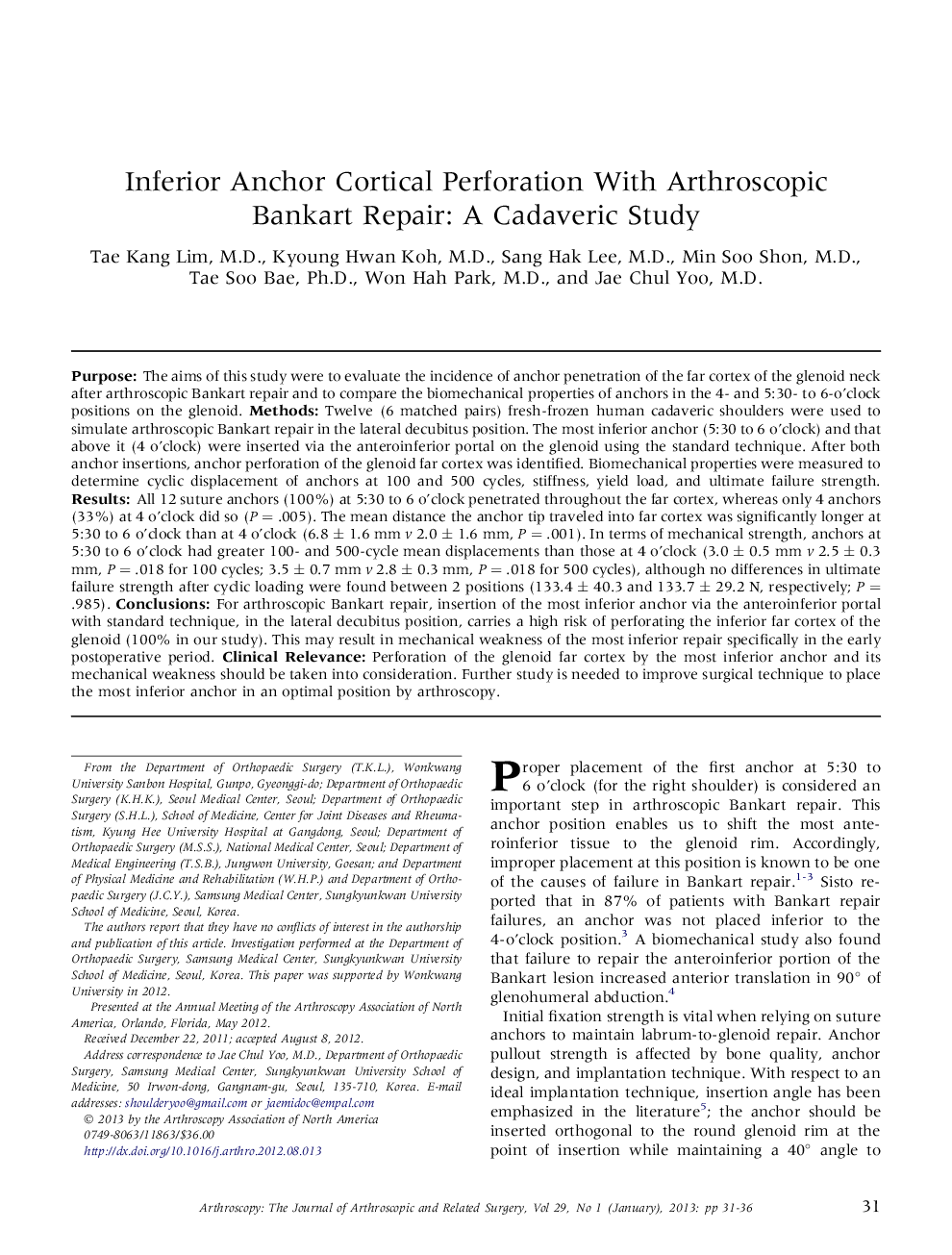| Article ID | Journal | Published Year | Pages | File Type |
|---|---|---|---|---|
| 4043959 | Arthroscopy: The Journal of Arthroscopic & Related Surgery | 2013 | 6 Pages |
PurposeThe aims of this study were to evaluate the incidence of anchor penetration of the far cortex of the glenoid neck after arthroscopic Bankart repair and to compare the biomechanical properties of anchors in the 4- and 5:30- to 6-o’clock positions on the glenoid.MethodsTwelve (6 matched pairs) fresh-frozen human cadaveric shoulders were used to simulate arthroscopic Bankart repair in the lateral decubitus position. The most inferior anchor (5:30 to 6 o’clock) and that above it (4 o’clock) were inserted via the anteroinferior portal on the glenoid using the standard technique. After both anchor insertions, anchor perforation of the glenoid far cortex was identified. Biomechanical properties were measured to determine cyclic displacement of anchors at 100 and 500 cycles, stiffness, yield load, and ultimate failure strength.ResultsAll 12 suture anchors (100%) at 5:30 to 6 o’clock penetrated throughout the far cortex, whereas only 4 anchors (33%) at 4 o’clock did so (P = .005). The mean distance the anchor tip traveled into far cortex was significantly longer at 5:30 to 6 o’clock than at 4 o’clock (6.8 ± 1.6 mm v 2.0 ± 1.6 mm, P = .001). In terms of mechanical strength, anchors at 5:30 to 6 o’clock had greater 100- and 500-cycle mean displacements than those at 4 o’clock (3.0 ± 0.5 mm v 2.5 ± 0.3 mm, P = .018 for 100 cycles; 3.5 ± 0.7 mm v 2.8 ± 0.3 mm, P = .018 for 500 cycles), although no differences in ultimate failure strength after cyclic loading were found between 2 positions (133.4 ± 40.3 and 133.7 ± 29.2 N, respectively; P = .985).ConclusionsFor arthroscopic Bankart repair, insertion of the most inferior anchor via the anteroinferior portal with standard technique, in the lateral decubitus position, carries a high risk of perforating the inferior far cortex of the glenoid (100% in our study). This may result in mechanical weakness of the most inferior repair specifically in the early postoperative period.Clinical RelevancePerforation of the glenoid far cortex by the most inferior anchor and its mechanical weakness should be taken into consideration. Further study is needed to improve surgical technique to place the most inferior anchor in an optimal position by arthroscopy.
